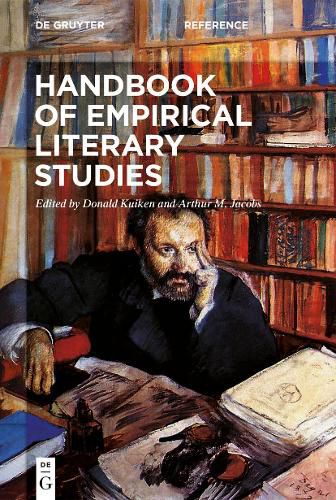Readings Newsletter
Become a Readings Member to make your shopping experience even easier.
Sign in or sign up for free!
You’re not far away from qualifying for FREE standard shipping within Australia
You’ve qualified for FREE standard shipping within Australia
The cart is loading…






This handbook reviews efforts to increase the use of empirical methods in studies of the aesthetic and social effects of literary reading. The reviewed research is expansive, including extension of familiar theoretical models to novel domains (e.g., educational settings); enlarging empirical efforts within under-represented research areas (e.g., child development); and broadening the range of applicable quantitative and qualitative methods (e.g., computational stylistics; phenomenological methods). Especially challenging is articulation of the subtle aesthetic and social effects of literary artefacts (e.g., poetry, film). Increasingly, the complexity of these effects is addressed in multi-variate studies, including confirmatory factor analysis and structural equation modeling. While each chapter touches upon the historical background of a specific research topic, two chapters address the area’s historical background and guiding philosophical assumptions. Taken together, the material in this volume provides a systematic introduction to the area for early career professionals, while challenging active researchers to develop theoretical frameworks and empirical procedures that match the complexity of their research objectives.
$9.00 standard shipping within Australia
FREE standard shipping within Australia for orders over $100.00
Express & International shipping calculated at checkout
This handbook reviews efforts to increase the use of empirical methods in studies of the aesthetic and social effects of literary reading. The reviewed research is expansive, including extension of familiar theoretical models to novel domains (e.g., educational settings); enlarging empirical efforts within under-represented research areas (e.g., child development); and broadening the range of applicable quantitative and qualitative methods (e.g., computational stylistics; phenomenological methods). Especially challenging is articulation of the subtle aesthetic and social effects of literary artefacts (e.g., poetry, film). Increasingly, the complexity of these effects is addressed in multi-variate studies, including confirmatory factor analysis and structural equation modeling. While each chapter touches upon the historical background of a specific research topic, two chapters address the area’s historical background and guiding philosophical assumptions. Taken together, the material in this volume provides a systematic introduction to the area for early career professionals, while challenging active researchers to develop theoretical frameworks and empirical procedures that match the complexity of their research objectives.